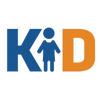


Facts about the #health and well-being of #California kids from www.kidsdata.org, #KidsData is a program of PRB
#Data #Facts #PublicHealth #PublicPolicy #Education #Equity #HealthEquity #SocialJustice #EnvironmentalJustice #Disability #SDOH #ACEs #MedMastodon
This profile is from a federated server and may be incomplete. Browse more on the original instance.